Ryan Hall's Blog, page 285
February 24, 2016
Rock ‘n’ Roll San Diego Will Have New Course
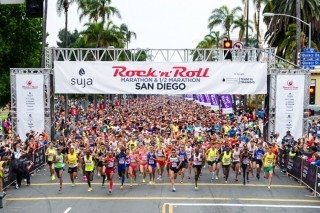
The Suja Rock ‘n’ Roll San Diego Marathon and 1/2 announced today that the marathon and half marathon courses will be revamped and have a new finish line at Waterfront Park.
Both races will continue to start at Balboa Park. The half marathon will go through Hillcrest, North Park and Normal Heights, before finishing at the new Waterfront Park in downtown. The full marathon course will be unveiled at a later date.
“Nothing says San Diego like a finish line on San Diego Bayfront,” said Ken Schulte, Marathon Course Director. “Waterfront Park keeps us true to our roots of finishing downtown and will offer some breathtaking views of San Diego Bay and the downtown skyline. Runners taking on the half marathon can expect a fast course and mostly downhill route highlighting some of San Diego’s most eclectic neighborhoods. This new route promises to be a party from start to finish.”
The marathon and half marathon will take place on Sunday, June 5, part of a larger weekend of running. The Rock ‘n’ Roll San Diego 5K presented by Brooks will take place on Saturday, June 4.
The post Rock ‘n’ Roll San Diego Will Have New Course appeared first on Competitor.com.
How to Buy Your Next Pair of Shoes
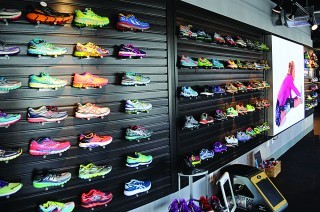
With so much techno-speak and marketing jargon about running shoes, it’s hard to know which ones are best for you. Here are four tips to help you find the right pair this spring.
1. Shop smart
You can buy shoes at a lot of places, but most specialty running shops sell only running-related gear, apparel and accessories—unlike a sneaker shop at the mall or sporting goods store that sells gear for many other sports besides running. And the people who work there know and understand running—running shoes, running gait types, how to train and what accessories you need. They are experts at fitting shoes and understanding how different types of shoes can influence your form, improve the kind of running you’re doing or reduce the chance for overuse injuries. The bottom line? Running shops ooze inspiration.
2. Feel or float?
Shoes are generally categorized by how much cushioning and structure they have. Do you like to feel the ground or would you rather have more cushioning under your feet? Running in minimally designed shoes requires agility and exceptionally strong lower legs and feet. Running in maximally cushioned shoes requires good balance and an inherent sense of proprioception. As far as structure goes, most runners pronate (the process of the foot rolling inward from the ankle when it impacts the ground) to some degree, and that’s OK. Many runners can run in neutral shoes or light stability shoes, which have a little bit of structure to reduce overpronation.
However, severe overpronation can lead to a variety of common overuse injuries, and in that case, more supportive shoes (or corrective insoles) are often needed. But remember, doing regular speed and strength drills will help you strengthen your feet and balance your gait.
3. Get a pair that fits
Your running shoes should fit snug, but not tight, in the heel and midfoot/arch area without pinching or feeling constrained when your foot flexes. The toe box shouldn’t be too tight either; it should have some extra wiggle room for your piggies to splay upon impact and push-off. (Some shoes have considerably more roomy toe boxes, especially shoes built for running rugged trails.) Your foot will also tell you if something about the shoe doesn’t feel right: Does it cramp your toes? Is there a seam that rubs awkwardly? Does it feel like it’s slipping off your heel on every stride? If the laces really need to be tightened down to get a comfortably secure fit, it’s probably not the best shoe for you.
4. And finally …
Never shop for a shoe by its color or how it looks with jeans. The one that comes in your favorite color may not be the best for you. And when it comes to running shoes, you should only wear them for running. Having a quiver of shoes will allow you to rotate pairs during a week of training and help extend the life of your shoes. However, wearing your running shoes to do
errands, mow the lawn or other everyday tasks will change the wear pattern of the outsoles and make them wear out sooner than they should. And that could lead to overuse injuries.
The post How to Buy Your Next Pair of Shoes appeared first on Competitor.com.
5 Tips for Sticking with Your Training Plan
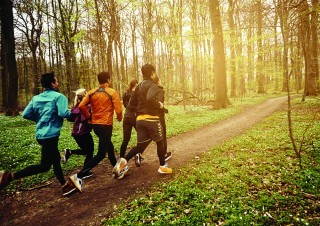
Photo: istockphoto.com
Your training plan looks so good on paper. Now all you have to do is do it. But actually finishing all those workouts on their assigned days is a little trickier than it seems.
As you prepare to tackle your training this spring, keep these key tips in mind:
Get the right plan for you
“Make sure the plan is personalized,” says coach Brian Rosetti, a founder of the Run SMART Project. If your training plan is too hard, you’ll end up hurt and in over your head. Too easy and you won’t improve. Either way, you’ll want to quit.
It’s common for runners to get pumped up this time of year, bang out a few hard workouts, then find themselves injured or sore and giving up on the whole thing.
The most important factor in sticking to your training plan is getting the right plan in the first place. Rosetti says it should take into account your current fitness level (be honest!), prescribe distances and paces based on your fitness, and progress as you go.
RELATED: What To Do When Your Training Plan Isn’t Working
Commit to a goal
Ideally, you’re progressing toward something—otherwise you’re going to find excuses not to stick with it.
“A lot of times that first week feels pretty good, but then it starts to wear on you,” admits Dennis Barker, head coach of Team USA Minnesota. The monotony of the day-to-day workouts can be hard to get through unless you have a reason to do so.
That reason doesn’t have to be a race, though that’s often the most motivating. Your goal just needs to be concrete and far enough out, but not too far—about three to four months—that you can work toward it over time. Set smaller goals along the way, like running a certain amount of mileage or nailing your weekly track workouts.
Find a buddy
There are a few common reasons people stray from their training: they’re too busy or don’t have time, they think they know better than the plan, or they’re just not motivated. By far the biggest issue, Rosetti says, is staying motivated and keeping training fun.
Getting someone to train with is “huge in terms of accountability,” he says. It works especially well if your friend is training for the same race and runs about the same speed as you. Even if you can’t find that ideal training buddy, you can still use group workouts and training “dates” to get yourself out of bed so you’ll have someone to enjoy (or suffer through) your workouts with.
Plan your day ahead of time
Even if you’re always motivated to do the workouts, it will still be hard if you don’t have the time.
If you think you’re magically going to find time in the day, you’re setting yourself up for disappointment. You have to plan your day specifically and set time aside, instructs Barker. For most people, that’s easiest in the morning. “Then you don’t have to think about it,” he says. “The later you wait, the more excuses you come up with.”
If you are going to get your training in after work, plan for it before you leave the house. Bring healthy food to the office. Schedule your tasks so you’ll be done in time to leave and be realistic about what you can do.
Be flexible (but consistent)
It can be easy to find yourself second-guessing your training. Should you be doing more? Should you cut a workout because you had a rough day?
It’s important to be flexible, says Barker, and know that there’s a limited amount of energy—emotional and physical—you can expend. If one day is exhausting at work, then maybe you need to move your hard run to another day. That doesn’t mean you need to fall off your plan entirely. It just means being sure that each day has a training objective and value. “Think about what you want to accomplish each day,” Barker says.
RELATED: How to Maintain Training and Balance When Life Gets in the Way
The post 5 Tips for Sticking with Your Training Plan appeared first on Competitor.com.
Dialing In Your Focus To Optimize Running Performance

Runners focus attention on a variety of different aspects during the course of a run, wandering between an internal and external focus.
There’s an abundance of things competing for our attention today. In fact, one of the reasons many of us love to run is a simplicity of movement that allows us to focus our attention in any number of directions. Some of us find a meditative-like state while others use the time to solve problems or work on the grocery list. But when it comes time to lace up the shoes and head out for an important run, where should your focus lie?
For sports psychologists, the focus of attention during a variety of tasks has been a fertile area of research over the past decade. The majority of the data suggests that directing attention externally (concentrating on the flight of a basketball after shooting) improves performance compared to focusing internally on the bodily motions involved in the skill (focusing on the actual movement of the arms in the shooting motion).
“Thinking about the biomechanics or the details of a skilled motor performance can introduce variability in the intended motion or action and cause one to ‘choke,’ particularly on high-precision and fine motor activities,” says Dr. Bradley Hatfield, Associate Dean in the Public Health Neuroscience and Cognitive Sciences Program at the University of Maryland.
Sports psychologists refer to this particular mental strategy as attentional focus and have broken it up into two distinct categories: internal focus (also called association) and external focus (dissociation). Associative thoughts are directed internally to bodily sensations, running form or pacing while dissociative thoughts are guided to the outside world in the form of daydreaming or problem solving.
It’s also dissociation/external focus if your favorite running ritual is cuing up your favorite running playlist and singing along in your head.
But unfortunately for endurance athletes, the role of attention in performance is less researched (and less clearly defined). Making matters more complicated, attention and focus are different during the execution of a brief task as compared to a marathon. A runner might focus attention on a variety of different aspects during the course of a run, wandering between an internal and external focus, making it more difficult to ascertain the benefit of a singular type of focus.
Classically, early research—Morgan and Pollock in 1977—suggested that elite marathon runners tended to focus attention internally on things like breathing and running form while novice runners adopted a more external focus.
“In his [Morgan] classic work, it was revealed that elite American distance runners tended to pay attention to their physiological state more often than not. This helped to avoid wasted motion,” says Hatfield.
But this research relied only on a survey of the habits of elite and amateur runners and didn’t directly measure any physiological variables, making quantification of an actual benefit difficult to ascertain.
Much of the recent research involving running and attentional focus involves measurement of running economy, a measure akin to fuel efficiency or miles per gallon. A greater running economy means a runner uses less energy to run at a given pace, allowing them to run longer and potentially faster. And basically anything that allows a runner to expend less resource while running ultimately benefits performance.
In a 2009 study in the Journal of Sports Sciences, German researcher Dr. Linda Schucker asked a group of trained runners to focus their attention on three different aspects while running on a treadmill. For three consecutive 10-minute periods, runners focused on the running movement, on their own breathing, and on their surroundings. The results showed that running economy increased when the runners focused their attention externally on their surroundings. An internally directed concentration on breathing or the running movement actually led to an increase in work.
The researchers observed that a focus on actions considered to be automatic, like breathing or running form, lowered efficiency, leading to the conclusion that, “Runners who wish to optimize their running in terms of movement economy should be encouraged to implement an external focus of attention in their runs.”
A 2014 study in the Journal of Sport and Exercise Psychology tried to further differentiate an internal focus of attention. Thirty-two runners ran for 24 minutes on a treadmill at a moderate intensity. For each 6-min block, participants had to direct their attention to different things (running technique, breathing, or general body feeling) or received no instructions. They found that while an internal focus of attention negatively influenced performance when directed at the things the runners couldn’t easily change (like breathing or running technique), an internal focus on how the body generally felt during exercise did not disrupt movement efficiency. Translation: It’s OK to check in with your body to see how it feels.
It should also come as no surprise that music helps distract attention away from internal thoughts and may also reduce fatigue. In a scientific study reinforcing common sense, researchers found that subjects ran faster during the first third of a simulated 5K race when listening to music, leading them to conclude that music allowed runners “to retain a reasonable focus on more pleasant external cues.”
So why does an external focus seem to help? Well, like many aspects of mental skill training, choosing the appropriate focus of attention may boil down to perception of effort. Since many link perception of effort with mental and physical fatigue, techniques that reduce a runner’s perceived effort generally have promise in improving performance. In other words, “tricking” your brain into believing that your body isn’t tired may reduce perceived fatigue.
RELATED: How Perception of Effort Can Make or Break a Race
Dr. Samuele Marcora, co-author of a recent review article on the topic titled Psychological Determinants of Whole-Body Endurance Performance, sums it up like this, “Dissociative thoughts may be useful (and possible) during a low to moderate intensity training session and, by reducing perceived exertion, may allow you to do a higher volume of training.”
Marcora modifies his advice, however, for those that want to run at higher intensities. “For anybody who wants to perform decently, paying attention to your perception of effort (internal association) and other information like distance to finish line (external association) is important because these information are needed to pace optimally.”
There may be some individual flexibility in choosing the correct mental strategy while running, but finding the optimal focus can improve performance and increase the enjoyment and satisfaction of exercise. What’s not to like about that?
The post Dialing In Your Focus To Optimize Running Performance appeared first on Competitor.com.
February 23, 2016
Shoe Of The Week: Mizuno Wave Catalyst

Fit-Feel-Ride: Sometimes a shoe falls between two traditional categories, and this one is definitely a compelling ’tweener. Mizuno serves up a nice mix of stability and lightweight performance in this versatile, new everyday trainer. It’s lighter and faster than most high-mileage trainers, but it’s also more durable and stable than most performance trainers. If you’re a runner who needs a little bit of stability to aid your gait, this one offers just a smidge without any hinderances. (For Mizuno fans, it’s somewhat of a blend of the brand’s Sayonara and Elixir shoes.) We liked this shoe enough to give it our Editor’s Choice—Best Debut award (tied with the Skechers Performance GoRun Forza) in our Spring 2016 wear-test review.
The key element of this shoe is the plastic Wave plate in the midsole that is tuned to offer a little bit of structure between the heel the midfoot. It has a fairly low-to-the-ground design, but it’s still a well-balanced trainer with just enough cushioning and protection for long road runs. It has a firm, somewhat damp feeling and stable in the heel, but then it transitions into a more energetic, lively feeling as the foot rolls through the gait cycle to the toe-off phase. The bottom line is that it offers a touch of responsiveness with enough cushioning. “This is a great do-everything shoe,” said one wear-tester.
This is the shoe for you if … You’re looking for a versatile, low-to-the-ground everyday trainer that’s both stable and fast.
Price: $110
Weights: 9.4 oz. (men’s), 8.0 oz. (women’s)
Heel-to-Toe Offset: 10mm; 26mm (heel), 16mm (forefoot)
Info: mizuno.com
RELATED: Shoe Of The Week—Skechers Performance GoRun Forza
The post Shoe Of The Week: Mizuno Wave Catalyst appeared first on Competitor.com.
Competitor’s Spring 2016 Editor’s Choice Running Shoes
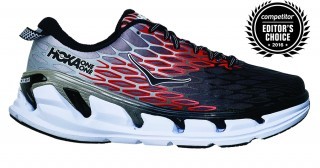
Every year, our wear-test team puts more than 50 pairs of running shoes through the rigors of training and racing, making notes about the fit, feel and ride of each shoe. Here are the road and trail shoes that earned our Editor’s Choice awards for this spring.
Photo Gallery
1 of {count}
Back to Start
View Larger Image

ROAD RUNNING SHOES—Editor's Choice: Hoka One One Vanquish 2, $170
HIGHLIGHT: Thickly cushioned and amazingly light
FIT-FEEL-RIDE: Impossibly light for a shoe with
as thick of a midsole as it has, the Vanquish 2 is
remarkably flexible and offers a nice mix of soft
landings and energetic toe-offs, especially at
moderate to fast paces. Not only is it considerably
lighter than the previous edition (almost 2
full ounces lighter per shoe), it also rides more
smoothly and is more responsive than the
original. It still features a cradle design in which
the foot and interior structure of the shoe are encased on the sides and bottom by a durable two-layer foam shell. Given the thickly cushioned chassis, a sense of ground-contact proprioception
and agility are understandably less in this shoe, but that becomes irrelevant once you find
your groove out on the run. Our testers found it
best for long runs, progression runs and tempo
runs, although it is still more than adequate for
slower recovery runs—even though it doesn’t feel
quite as smooth or responsive. “This shoe was
a blast,” said one wear-tester. “It is one of the
most responsive shoes I’ve ever run in. It sets the
standard for energy return in a running shoe.”
Weights: 9.8 oz. (men’s), 8.3 oz. (women’s)
Heel-to-Toe Offset: 5mm; 32mm (heel),
27mm (forefoot)
View Larger Image

ROAD RUNNING SHOES—Best Debut (tie): Mizuno Wave Catalyst, $110
HIGHLIGHT: Low to the ground and stable, yet light
and fast
FIT-FEEL-RIDE: Sometimes a shoe falls between
two traditional categories, and this one is definitely an interesting ’tweener. Mizuno serves up a
nice mix of stability and lightweight performance
in this versatile, new everyday trainer. It’s lighter
and faster than most high-mileage trainers, but
it’s also more durable and stable than most
performance trainers. (It’s somewhat of a blend
of Mizuno’s Sayonara and Elixir shoes.) The key
element of this shoe is the plastic Wave plate in
the midsole that is tuned to offer a little bit of
structure. It has a fairly low-to-the-ground design,
but it’s still a well-balanced trainer with just
enough cushioning and protection for long road
runs. The bottom line is that it offers a touch of
responsiveness with enough cushioning. “This is
a great do-everything shoe,” said one wear-tester.
Weights: 9.4 oz. (men’s), 8.0 oz. (women’s)
Heel-to-Toe Offset: 10mm; 26mm (heel),
16mm (forefoot)
View Larger Image

ROAD RUNNING SHOES—Best Debut (tie): Skechers Performance GoRun Forza, $120
HIGHLIGHT: The first high-mileage stability
trainer from Skechers Performance
FIT-FEEL-RIDE: Although Skechers entered the
performance running category with lightweight,
low-to-the-ground models, it’s now venturing
into shoes with more structure. The Forza is a
well-balanced, high-mileage stability trainer
with a modern rendition of a medial post that’s
integrated into the softer layer of foam from the
heel to the forefoot, a sleek, seamless upper and
a slightly wider footprint. It’s a super-sturdy shoe,
but all of that stability and support is hidden in
a comfortable, smooth-riding cruiser that even
has a touch of responsiveness. It’s the shoe Kara
Goucher has been training in, which makes sense
since she played a role in developing it. Regardless
of the weight, it’s a shoe that runs a lot lighter
than it feels out of the box. “The best Skechers
has ever made,” one wear-tester gushed.
Weights: 10.8 oz. (men’s), 8.2 oz. (women’s)
Heel-to-Toe Offset: 8mm; 30mm (heel),
22mm (forefoot)
View Larger Image

ROAD RUNNING SHOES—Best Update: New Balance Fresh Foam 1080v6, $150
HIGHLIGHT: Soft, stable and supremely smooth
FIT-FEEL-RIDE: New Balance continues to evolve
its Fresh Foam neutral shoes using data derived
from a wide range of runners. (That data helps
create a stride with more flow, smoothing the
foot’s transition between touchdown and takeoff.)
Our wear-testers loved the thick, soft cushioning
of this edition and the extra-wide footprint. One
of the biggest changes to this shoe is the addition
of flex grooves in the midsole and outsole that
help increase flexibility and lend a smoother
heel-toe transition. This edition also has a new
engineered mesh upper that offers both greater
flexibility and comfort, while an interior bootie fit
system helps keep the foot in place. Our wear-testers
loved the comfortable interior and stable ride
of this high-mileage workhorse, noting its slightly
wider footprint and locked-down fit.
Weights: 10.3 oz. (men’s), 8.5 oz. (women’s)
Heel-to-Toe Offset: 8mm; 29mm (heel),
21mm (forefoot)
View Larger Image

ROAD RUNNING SHOES—Best Value: Zoot Solana 2, $100
HIGHLIGHT: More stable, more breathable, but same
ride
FIT-FEEL-RIDE: The brand known for triathlon
gear and its surf-oriented Southern California
style continues to make a shoe for the heartland.
The second edition of this easy-riding neutral
trainer is even better than the award-winning
original. The biggest changes are its updated
heel construction that secures the foot better and
a new, more breathable and flexible upper that
helps create a snazzier fit. It retains the luxurious
blend of softness, snappy responsiveness and just
enough inherent stability from the injection-molded
midsole, making it a versatile, smooth-running
everyday trainer with a little bit of kick to it. It has a
plush, seamless interior that will tempt you to wear
it barefoot—and then you might never wear socks
again! This is a solid trainer at any price, but at
$100 it’s an amazing bargain.
Weights: 9.5 oz. (men’s), 8.5 oz. (women’s)
Heel-to-Toe Offset: 8mm; 28mm (heel),
20mm (forefoot)
View Larger Image

TRAIL RUNNING SHOES—Editor's Choice: Brooks Cascadia 11, $120
HIGHLIGHT: Protective, stable and versatile
FIT-FEEL-RIDE: If you want a trail shoe that tackles most types
of terrain pretty well, this is the shoe for you. You can run on
technical routes with sharp, jagged rocks in the Cascadia (it
has a forefoot rock plate) or you can run smooth dirt trails
to your heart’s content, and anything in between. The slight
tweaks to the latest edition of this tried-and-true trail fiend make it the best all-around version yet. It still offers a supportive
ride, thanks to four pivot point posts throughout the
midsole—they work like a medial post on a stability-oriented road shoe, but are less rigid and controlling. The posts do a good job at providing support over changing terrain without
overcorrecting stride. Ample cushioning and a comfortable upper make this shoe feel good from the get-go, and the array
of small knobby outsole lugs underfoot grips even slick dirt and rock. The updated, more rugged toe box is durable and
protective, while a new saddle configuration and more sensibly placed overlays offer a better fit with less material. Some of
our wear-testers found this shoe a little bit stiff, but we loved that it’s versatile enough to run on all types of trails (and even
roads when necessary). Rare is the trail shoe that can conquer so much ground, which is why like this one so darn much.
Weights: 11.8 oz. (men’s), 10.1 oz. (women’s)
Heel-to-Toe Offset: 10mm; 27mm (heel), 17mm (forefoot)
View Larger Image

TRAIL RUNNING SHOES—Best Debut (tie): Montrail Caldorado, $120
HIGHLIGHT: Moderately rigid, very supportive
FIT-FEEL-RIDE: Montrail, one of the original trail
running shoe brands, is back in a big way this year,
starting with the Caldorado. For a firm, noticeably
supportive shoe that can handle burly mountain
terrain, it feels lightweight and comfortable, and
fl exes well at the forefoot for a smooth ride. The
mid-foot stability was appreciated by those who
tend to pronate on smooth terrain, and helped
neutral runners fight foot fatigue on long runs. The
midsole/outsole blends responsive cushioning
with solid traction and a jab-blocking, hard plastic
protective rock plate under the forefoot. The
seamless upper is comfortable and breathable,
while overlays and a toe bumper provide structure
and abrasion protection. The insole wraps high
around the sides of the foot, adding to the seamless
feel of the interior.
Weights: 11 oz. (men’s), 9.1 oz. (women’s)
Heel-to-Toe Offset: 8mm; 19mm (heel), 11mm
(forefoot)
View Larger Image

TRAIL RUNNING SHOES—Best Debut (tie): Scarpa Neutron, $129
HIGHLIGHT: Cushion, protection and trail “feel”
FIT-FEEL-RIDE: This shoe seems a bit firm and
stiff out of the box, but testers were pleasantly
surprised by the responsive cushioning underfoot
and smooth ride. The Vibram outsole and
widely spaced lugs do a great job at grabbing
everything from dirt trails to slick rocks. The traction,
along with the protective upper wrapping
feet securely, inspired confidence going both
uphill and down. Overall, the Neutron made
testers feel notably nimble. It’s a full-volume shoe
that might feel too roomy to some, but many of
our testers appreciated the breathing room. The
smartly designed “lace pocket” lets you tuck in
laces to avoid getting tripped up by a snagging
branch. If your aim is to run fast or maintain the
same consistent gait you might on the roads, the
Neutron will be right up your alley.
Weights: 9.7 oz. (men’s), 8.2 oz. (women’s)
Heel-to-Toe Offset: 6mm; 25mm (heel), 19mm
(forefoot)
View Larger Image

TRAIL RUNNING SHOES—Best Update: Hoka One One Challenger ATR 2, $130
HIGHLIGHT: A forgiving—but not too squishy—ride
FIT-FEEL-RIDE: The updated Challenger ATR has a more secure upper for less foot movement within the shoe on technical terrain. And the 4mm lugs on the outsole grab the trail, but aren’t too pronounced; this shoe runs fairly smooth on pavement.
The Challenger ATR is a more firm-feeling Hoka than many in the line, and has a lower-to-the-ground ride while still serving up plush Hoka cush. The result is a forgiving yet somewhat agile shoe. One tester likened its capabilities to “a monster truck,” rolling over terrain while protecting
the driver; yet on off-camber trails, the ATR 2 can
still feel a bit wobbly. The toe box is a tad narrow
and shallow; some complained of pressure on
toes after many miles. The first edition of this
shoe was our top pick last year and this updated
version was one of our favorites this year.
Weights: 9.5 oz. (men’s), 7.8 oz. (women’s)
Heel-to-Toe Offset: 5mm; 31mm (heel), 26mm
(forefoot)
View Larger Image

TRAIL RUNNING SHOES—Best Value: Merrell All-Out Crush, $100
HIGHLIGHT: Super-flexible, lightweight, low-profile
FIT-FEEL-RIDE: The All-Out Crush is a shoe that
gives you a tactile running experience—its slight
cushioning and low-to-the-ground profile forces
you (in a good way) to feel your way along the
trail, picking your way through rocks and roots
like a ninja. Its featherweight construction, major
flexibility in the forefoot and minimal feel overall
is speed-inspiring, as is the grippy traction underfoot.
The mesh upper breathes well, and drain
holes at the bottom of the arch make this a good
choice for wet climes. We also liked that the
insole is connected to the shoe, which seemed to
add to the proprioceptive feet-to-trail feel of this
shoe. Although a few testers thought this shoe
had too spacious of an interior, we liked how the
thermoplastic polyurethane overlays add a bit of
structure to the upper without adding weight.
Weights: 8.0 oz. (men’s), 7.0 oz. (women’s)
Heel-to-Toe Offset: 7mm; 21mm (heel), 14mm
(forefoot)

More Galleries
The post Competitor’s Spring 2016 Editor’s Choice Running Shoes appeared first on Competitor.com.
How Runners Can Solve a Sore Achilles Problem
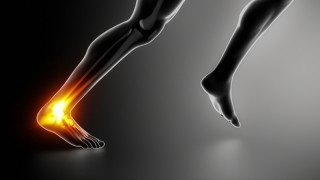
Many runners are familiar with the burning sensation that accompanies Achilles tendinopathy. What starts as a dull ache soon grows into a fiery pain, quickly evaporating any chance of a successful workout.
One might even say it’s every runner’s Achilles Heel (sorry, I couldn’t resist).
But Achilles tendinopathy is actually quite common—and luckily, it’s usually fairly easily to treat (unlike IT Band Syndrome, which is often trickier and more stubborn). It’s important to know that there’s no such thing as Achilles tendinitis, which must include inflammation because of the ‘itis’ suffix.
“The Achilles tendon is incapable of swelling (the bursae—a tiny sac of fluid between the Achilles and heel can swell, but that’s different),” according to Jay Dicharry, a physical therapist and biomechanics expert at Rebound Physical Therapy in Bend, Ore. “We should call the injury Achilles tendinopathy. Basically, the tendon is weak and dysfunctional, and thus compromised.”
Therefore, treatment includes strengthening and correcting the function of the Achilles tendon. There are two stages of Achilles tendinopathy treatment: the acute stage and the rehabilitation phase.
The Acute Stage of Achilles Tendinopathy
The first phase of treatment begins as soon as the injury starts and usually lasts about 1-3 days. The goals during this stage are to reduce pain and manage any swelling around the Achilles tendon.
This is when the standard RICE (Rest, Ice, Compression, Elevation) treatment is very helpful. Runners with a painful Achilles tendon should stop running, ice the painful area, use compression socks, and elevate the leg for 10-15 minutes 1-2 times per day.
Wearing shoes with a slightly higher heel-toe drop can also reduce the stress on the tendon. Spending time barefoot or in zero-drop shoes can further irritate the tendon, so it’s best to give the Achilles more support during this phase of treatment.
This approach can help you manage the early pain signals from the injury but it probably won’t heal it outright. There needs to be a much more specific treatment plan after the acute phase of the injury.
The post How Runners Can Solve a Sore Achilles Problem appeared first on Competitor.com.
Is It Really About Mind Over (Injured) Matter?
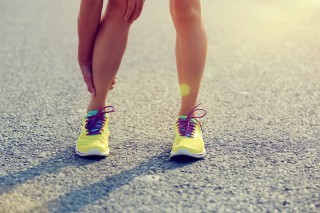
Photo: Shutterstock.com
Three years ago, 37-year-old Angela Bekkala toed the line for a half marathon. She’d been sticking her paces in training and was ready to go, but two miles in, Bekkala began to feel a familiar foot pain. Convinced a former case of tendonitis had returned, she finished the race far off her goal time. When she returned to her physical therapist and talked it over, however, they came to the conclusion that Bekkala was physically fine. It was her fear of re-injury that had held her back.
Like many runners, Bekkala was dealing with the psychological effects of her injury rather than the physical. Just as the mind can play a crucial role in race performance, so too can it wreak havoc on injury management. “I see this quite a bit,” says Dr. Brent Walker, president of the Association for Applied Sport Psychology and associate athletics director for Championship Performance at Columbia University. “Physically an athlete is ready to return, but mentally that isn’t the case.”
When not managed correctly, the athlete’s perception of injury and/or state of recovery from injury can sabotage future efforts in race performance. That’s the bad news. The good news, however, is that under the guidance of the right practitioner, athletes can retrain the brain to allow for full recovery and a return to normal levels of execution.
Winning The Mind Game
Maryland based physical therapist Dr. Gene Shirokobrod says that patients who struggle to recover from injury are often fighting a past bias. “You form a perception based on experience and common sense,” he says. “If you’ve had a sprained ankle in the past, for instance, and then turn your ankle, you don’t want to put weight on it for fear of further injury. But if you then see a PT and after assessment he or she tells you it’s not very serious, you can accept that and begin to move on.”
Shirokobrod will typically listen to a patient’s version of events and then do an assessment to see how the two match up—or not. “I’ll address whatever tissue injury might exist but then slowly integrate them back to normal movement,” he says. “With a graded introduction to movement, I am reinforcing to the patient the belief that he or she is OK.”
A 2011 study, The Effect of Neuroscience Education on Pain, Disability, Anxiety, and Stress on Chronic Musculoskeletal Pain backs up this approach. The study found that “For chronic MSK [musculoskeletal] pain disorders, there is compelling evidence that an educational strategy addressing neurophysiology and neurobiology of pain can have a positive effect on pain and … physical performance.”
Two-time Ironman finisher and sports psychologist Dr. Jim Taylor says that runners who haven’t retrained their injury thinking often self-sabotage their race results. “Runners can be highly invested in their events and fear failure,” he says. “If they are hyper-sensitive to past injury, they have an out if they aren’t performing as they’d like.”
This was exactly what Bekkala experienced. “I hadn’t had any pain or weakness in my foot for weeks prior to the race,” she says. “But when I came face to face with going after my goal time, fear found a home in my foot.”
Walker says that in these cases, athletes and practitioners need to drill down and determine if the mind is playing tricks on the body. “If all the tests and analysis indicate no injury, then what else is going on?” he asks. “This is where I give athletes cognitive strategies to reinterpret what’s happening and that their pain signals are not real.”
Sometimes, Walker says, patients believe they must feel well to run well, so if the perception is there that something is amiss, performance falls apart. “This is where patients need to reframe situations so that they can run well no matter what,” he says.
Shirokobrod says that patients need to learn to trust their bodies. “If you’ve consulted with someone who tells you it’s OK, you can work on building independence and awareness of your pain perceptions,” he explains. “Once you take control of the situation, it’s empowering and it becomes much easier to manage in the future.”
Since her foot injury a few years back, Bekkala has made real progress in this department—a subsequent injury didn’t have quite the power over her brain as the first. “It definitely surprised me at how much I needed to rehab my mind in addition to rehabbing my injuries,” she says. “It’s easy to do my PT exercises every day. The difficult part is convincing myself that I am OK, strong, and healed. But it does get easier everyday.”
RELATED: Is Squeezing 100% Out of Yourself Worth the Risk?
The post Is It Really About Mind Over (Injured) Matter? appeared first on Competitor.com.
February 22, 2016
Why You Should Stop Doing Crunches
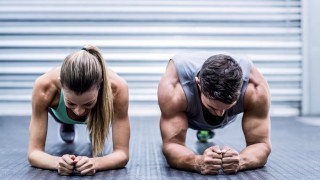
Build a solid foundation for your core with a well-rounded core routine, and you will accomplish the dual goals of looking good while being strong and pain-free.
Adapted with permission of VeloPress from Core Envy: A 3-Step Guide to a Strong, Sexy Core by exercise physiologist and personal trainer Allison Westfahl. Learn more at coreenvybook.com.
Stop Doing Crunches!
It might come as a shock that a good core strengthening program should not include crunches!
As an exercise physiologist, I omit crunches from my personal training programs because they don’t utilize a significant percentage of your core musculature.
While it feels like you’re working hard when you’re 70 reps into a grueling round of 100 crunches, you are predominantly working a single muscle group—the rectus abdominis (rectus). In actuality, the true “core” of the body includes countless other muscles. It’s all the core muscles that affect how well you move—and how good you look.
This brings up the issue of function versus vanity. Why wouldn’t you want to focus your gym time on developing a rockin’ rectus? Aren’t those the beach muscles that look great with a spray tan? If a well-developed rectus is what turns heads, do we really need a well-rounded core routine that works all the other muscles?
The short answer is that a high-functioning core leads to a better-looking core.
Focusing on only a few core muscles can lead to poor posture (which makes your tummy stick out) and injuries (which will inhibit you from being able to work out). Build a solid foundation for your core with a well-rounded core routine, and you will accomplish the dual goals of looking good while being strong and pain-free.
The post Why You Should Stop Doing Crunches appeared first on Competitor.com.
9 Tips and Tricks for Your GPS and Heart Rate Monitor
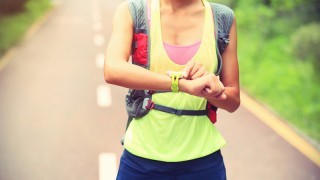
A few tips and tricks regarding your GPS watch and heart rate monitor that you may not have known:
GPS run distance is now very accurate. We have noticed minimal distance differences between simultaneously running GPS watches or phones, at least on the open road. They are all very accurate these days, and most when connected to app or computer, now update current GPS signal satellite locations. Yes, their orbits do change. Up-to-date satellite location information is key to acquiring as many satellites as possible to fine-tune GPS accuracy. With fewer satellites in the mix your captured path may drift from actual. While your GPS may say you are good to go, give it a few minutes to acquire as many satellites as possible, orienting yourself with an open view to the South sky.
Trail running can result in less accurate GPS distances, usually shorter than actual, due to many turns not completely caught between GPS sample points and obstruction of the satellite signal by terrain features. Some of the same issues can apply when running in cities with tall buildings.
Race courses are measured on the shortest tangents, so your GPS distance may vary. Always look ahead and run the shortest tangent if you safely can. Your GPS-tracked race, due to traffic not allowing you to run all tangents, or if you are not focused on running the shortest line, can over-measure the “official” distance. This is particularly the case on looped courses with many turns. Plan ahead for a faster than actual GPS pace on such race courses.
To get a good chest heart rate read, always wet the monitor straps before wearing. After acquiring heart rate to your device, jog a bit to let things settle down. Rinse chest straps using mild soap after use.
All heart-rate monitors can have variations and dropouts. In particular we have found this to be the case with chest straps that yield high readings in the first 10 or so minutes of a run. Low temperatures and humidity, hair, synthetic fabrics, etc., all can cause issues for heart rate monitors. Stopping for a few seconds can sometimes settle the rate down to more accurate levels.
It can be problematic to maintain accurate heart rate readings with wrist-based monitors while lifting weights, clenching bars, etc.
Shield wrist heart rate monitors from very bright sun, which can sneak under the band and interrupt the signal. Look for bands with a good light and cold air-free seal to your wrist. Wear wrist heart rate straps about an inch away from your wrist bone and tightly cinched.
When you first pair a heart rate or another sensor to a device, keep the two as close together as possible. The pairing wake-up signal can be weak.
If you have paired a sensor to a phone, keep the phone on the same side and plane of your body as the sensor. This will help avoid dropouts. This also applies to wrist heart-rate monitors and Bluetooth wireless headphones.
The post 9 Tips and Tricks for Your GPS and Heart Rate Monitor appeared first on Competitor.com.
Ryan Hall's Blog
- Ryan Hall's profile
- 21 followers



